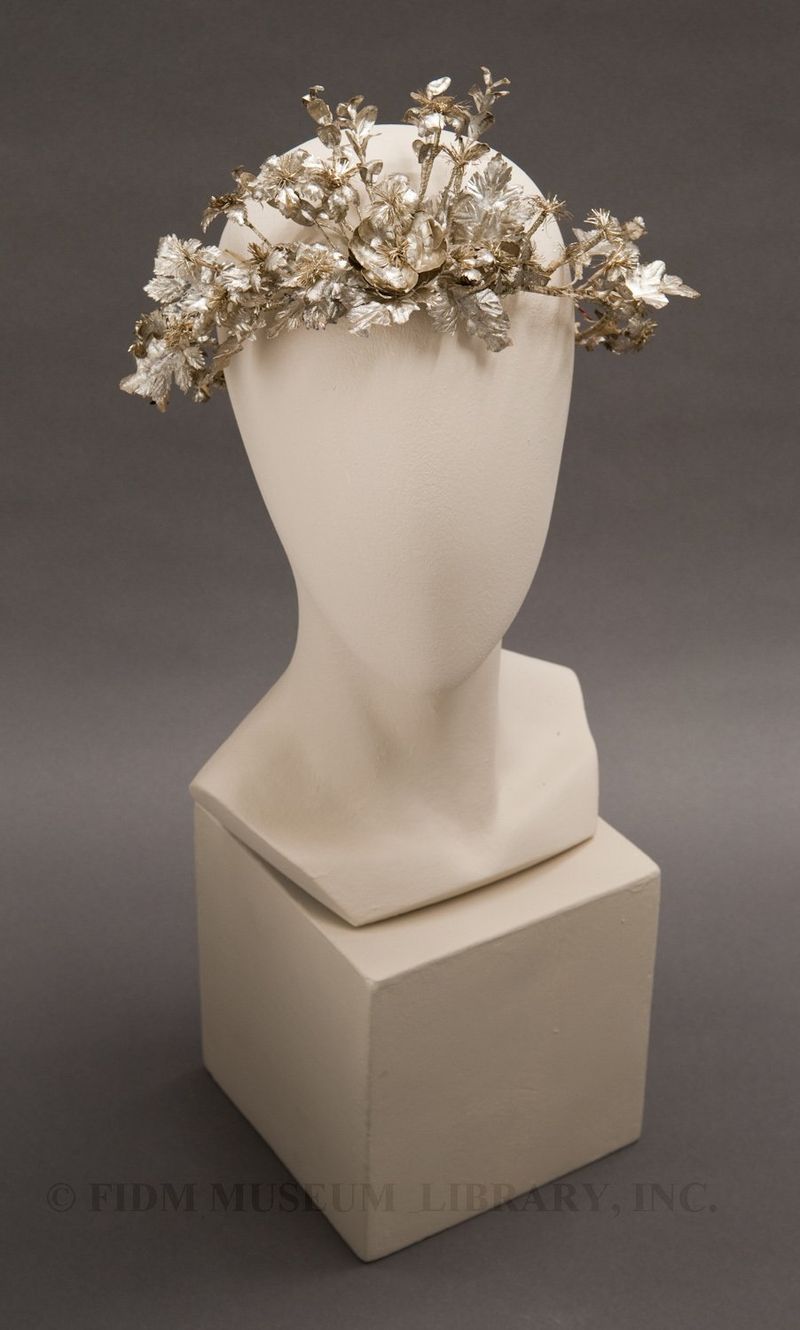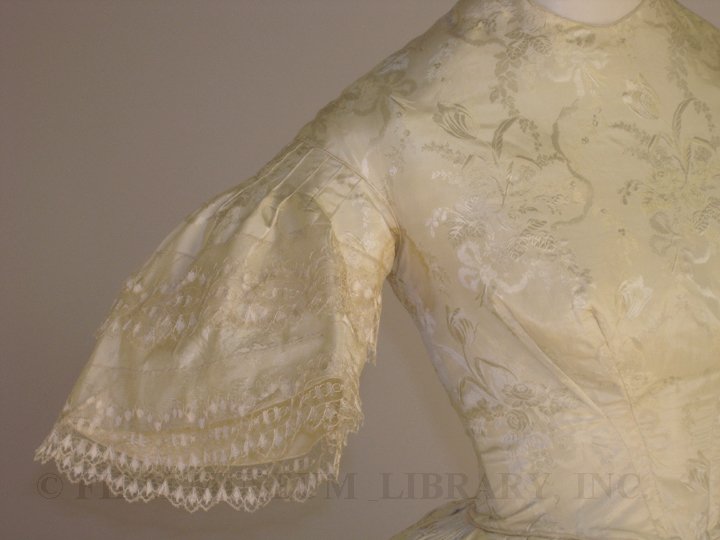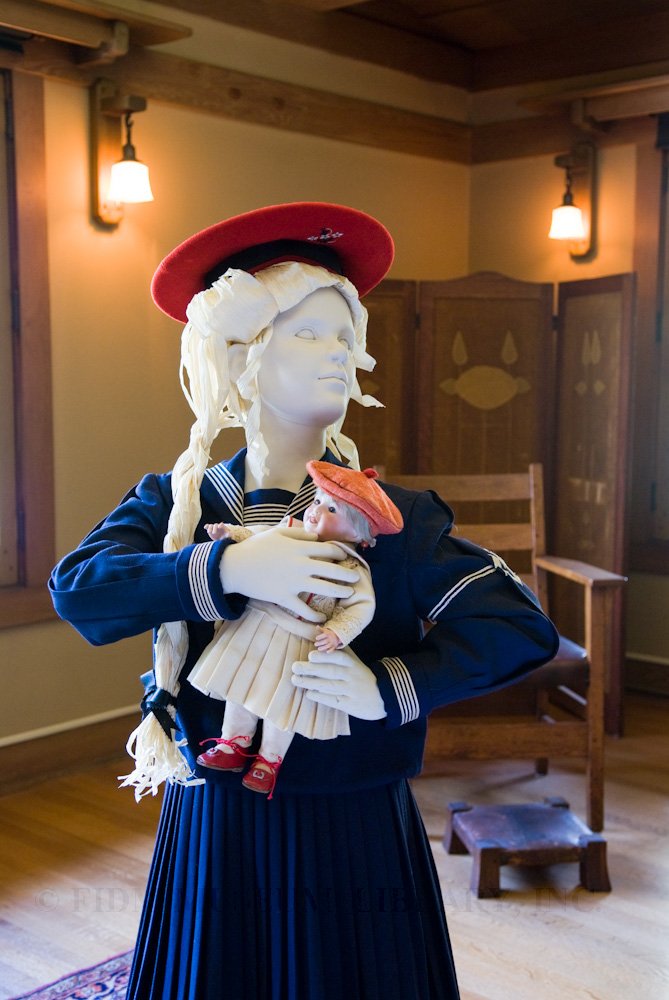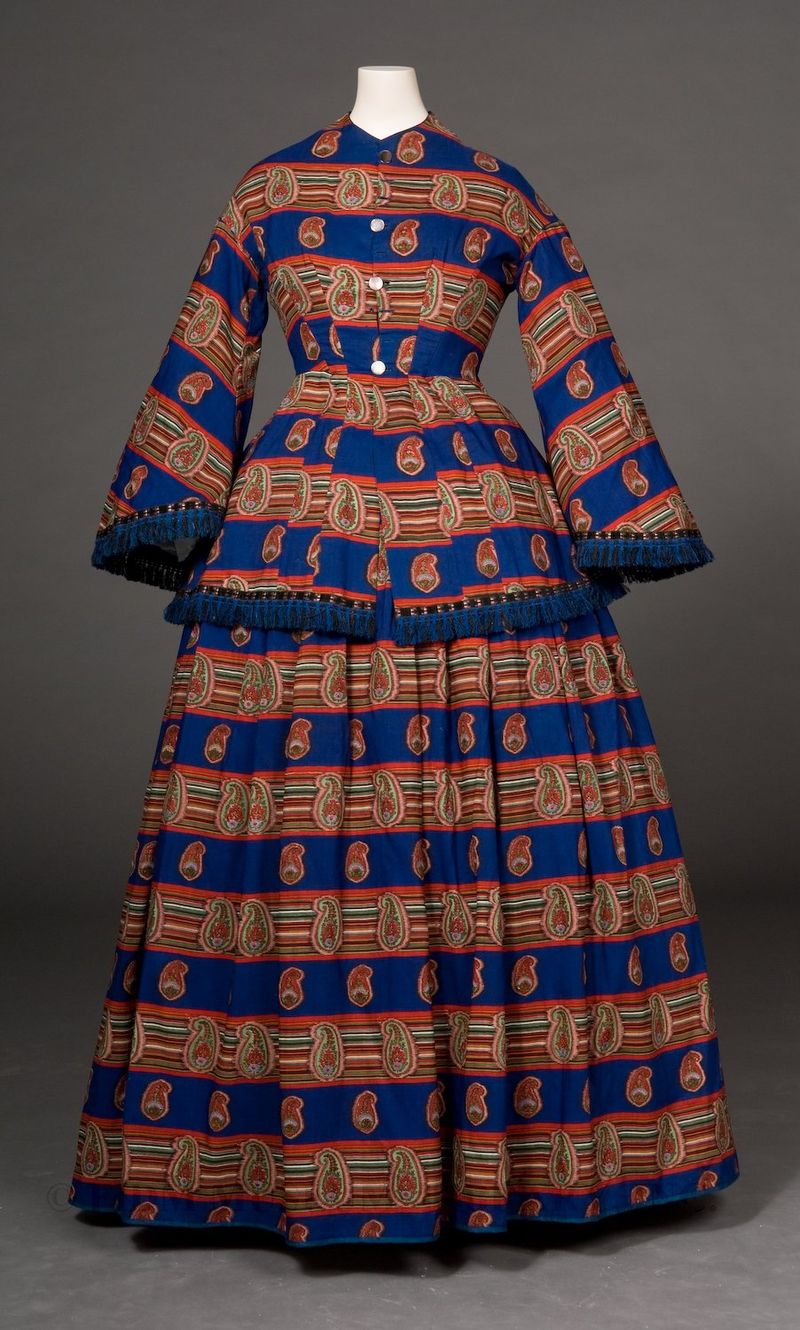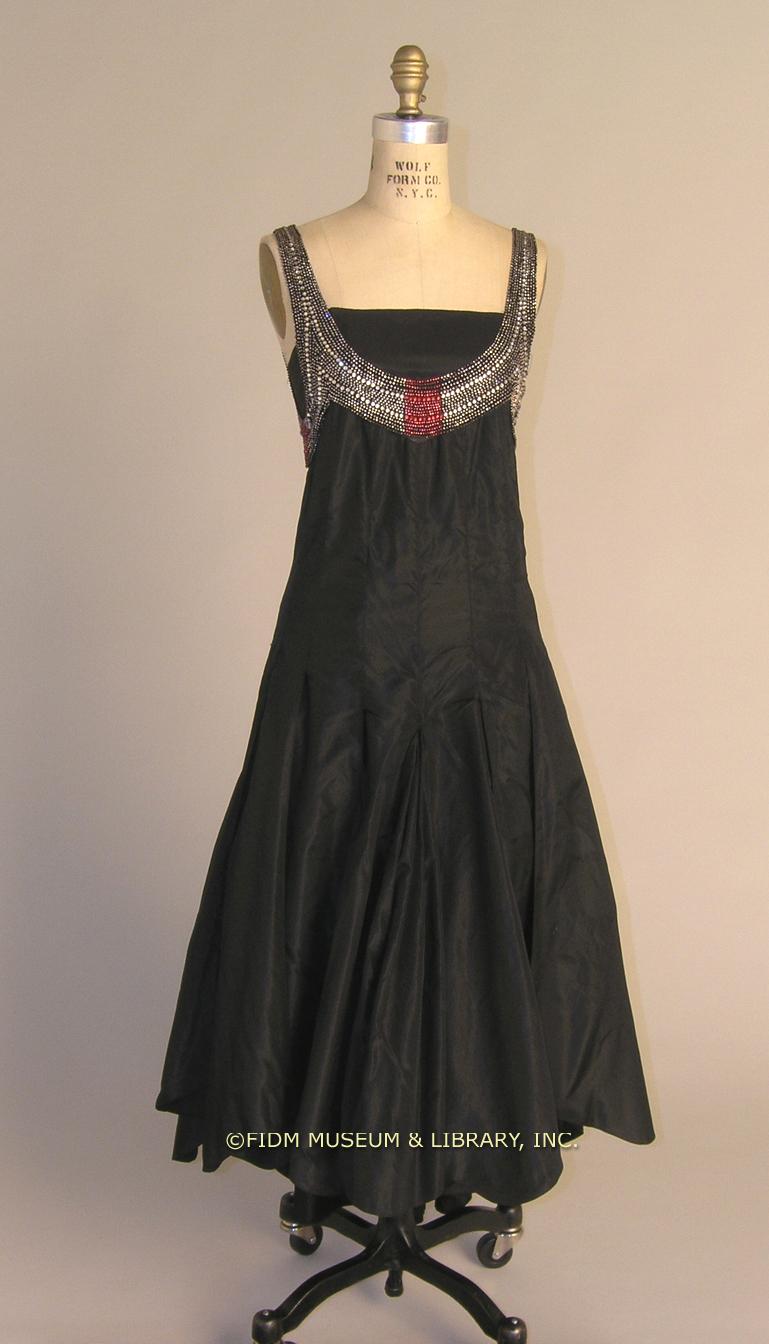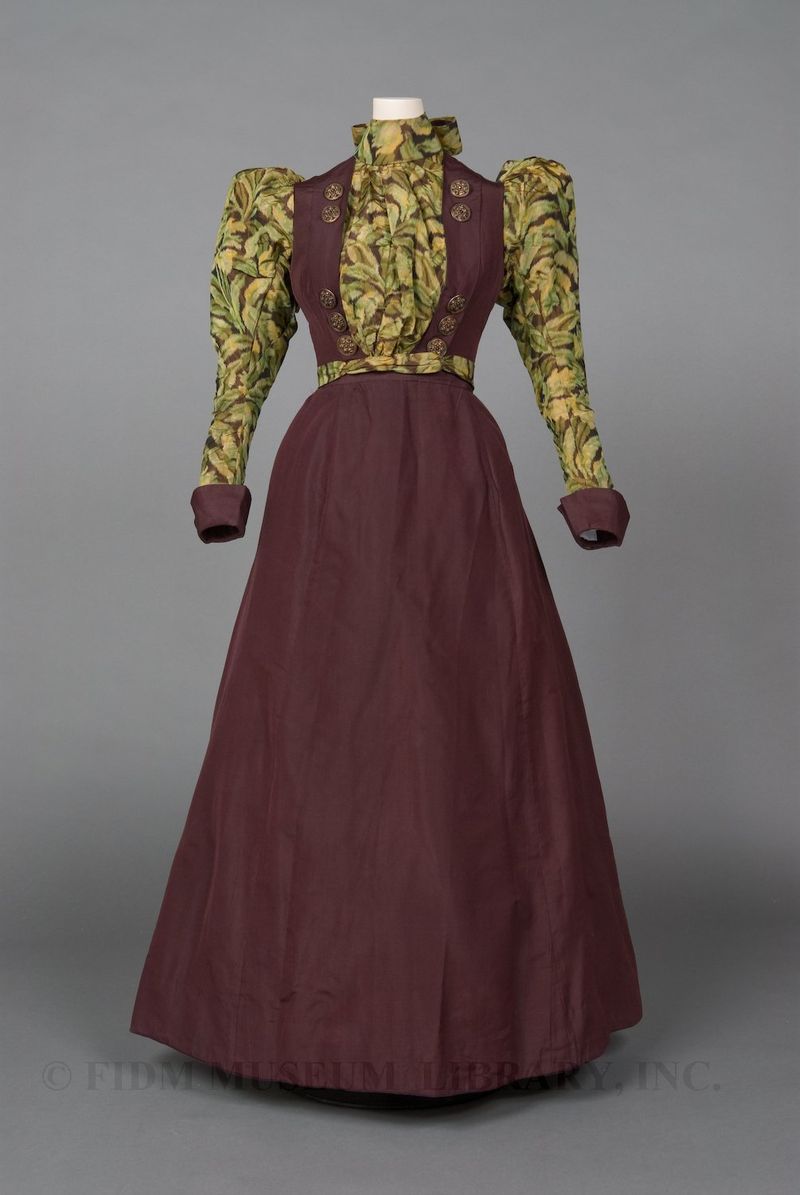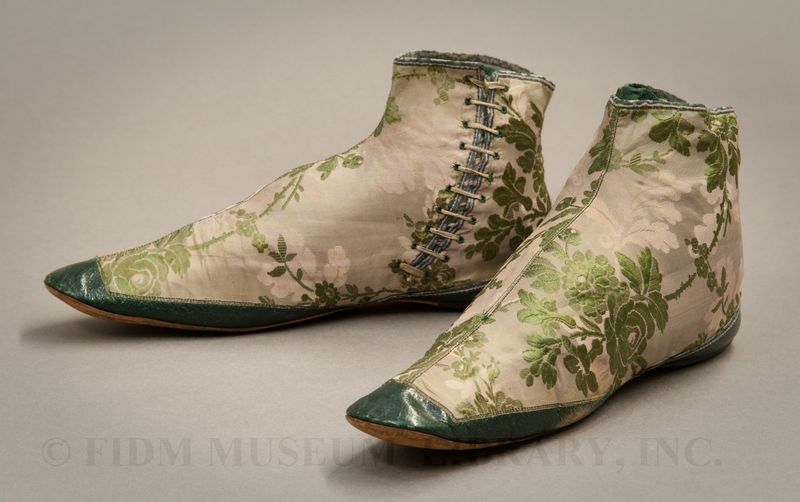This website uses cookies so that we can provide you with the best user experience possible. Cookie information is stored in your browser and performs functions such as recognising you when you return to our website and helping our team to understand which sections of the website you find most interesting and useful.
Anyone interested in the history of fashion quickly realizes that fashion is a series of cyclical repetitions. Contemporary silhouettes, colors and design details reference recent and historic styles, often with only slight modifications to bring a garment... Read Article ››
Dress form, mannequin or floating form?
Regular readers of this blog have probably noticed the variety of forms we use to display objects from the FIDM Museum collection. When we photograph an object for in-house documentary purposes, it's usually dressed on a headless dress form or mannequin.... Read Article ››
Boy’s jacket and vest, 1870-1874
In the nineteenth-century, children were idealized as "perfect beings who were not only without sin, but who offered adults a model of unworldly goodness."1 As children grew towards emotional and physical maturation, they inevitably lost their... Read Article ››
Texture in fashion
Color and pattern are usually the first aspects of a garment to catch the eye, closely followed by silhouette. But what about texture? Though texture might not be the first thing we notice, it plays an important role in establishing the mood of a garment.... Read Article ››
Sailor suits
Beginning in the mid-nineteenth century, young boys and girls were often dressed in sailor suits. Worn as both school uniforms and everyday dress, the popularity of the style was sparked by this 1846 Winterhalter portrait of Albert Edward, Prince of Wales.... Read Article ››
Paisley day dress, 1854-56
Two-piece day dressPrinted wool challis 1854-56 Museum purchase 2004.5.40AB The elongated, tear-drop shaped motif decorating this vivid 1850s day dress is known as a paisley. A motif with ancient origins, the paisley is a stylized derivation of naturalistic... Read Article ››
Chatelaine purse
Combining utility and beauty, chatelaines were a form of functional jewelry worn hanging at the waist. Comprising a hook and multiple dangling chains attached to small, useful objects (scissors, writing utensils, keys, purse, watch, perfume vial, etc.)... Read Article ››
The Little Black Dress
During the nineteenth century, black clothing was usually worn to signify a special status, i.e. mourning, religious piety, extreme poverty or a position of economic and social authority. Because many professional men adopted black suit coats after 1850,... Read Article ››
Day ensemble, 1894-1895
In 2006, the FIDM Museum received a large donation of garments and accessories spanning almost 100 years of fashion history. With garments dating from about 1850 to the late 1940s, the objects in this donation provide a window into the evolution of... Read Article ››
Evening boots, 1850-55
Women of the mid-nineteenth century had essentially two choices when it came to fashionable footwear: ballet-like slippers or ankle boots. Both types of shoe were made of soft, pliable textiles such as velvet or satin and had a flat, extremely thin leather... Read Article ››
Morning gown, c. 1895
For the Victorian woman, correct dress was an essential component of social acceptance. Women of the aristocratic classes and the nouveaux riche changed outfits multiple times each day, always with the knowledge that dress played a crucial role in determining... Read Article ››
Masculine dress?
In the early 20th century, women who chose to wear bifurcated garments (i.e. trousers) outside of the gymnasium or off the playing field risked public censure. Though women had been wearing full, almost skirt-like trousers for sporting activities since the... Read Article ››

